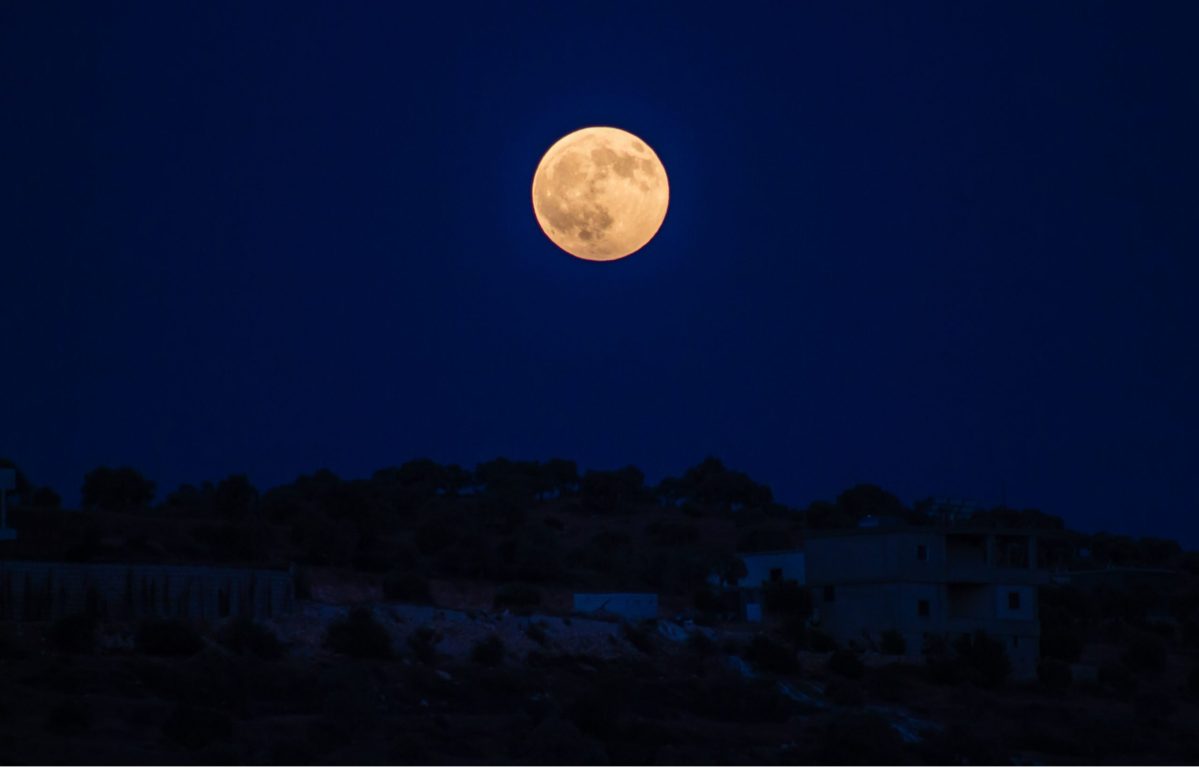It’s that time of year again: Supermoon season! Tonight, if your weather is nice, you’ll get a look at a beautiful “super worm moon” in the night sky, but uh … what does that mean again?
Well, let’s get to the “super” part first. The moon’s orbit of the earth is not perfectly circular, meaning at certain times, it’s actually closer to the earth. This is called “perigee” (the opposite is the apogee if you were wondering). When the moon is at perigee during a full moon (when the earth is between the moon and sun and the face of the moon is fully illuminated) the full moon appears larger and brighter, up to 7%!
Of course, the opposite is true too. When the moon is full when it reaches apogee, we get a “micromoon.” A micromoon is 14% smaller than the supermoon! The moon is at or near perigee for about three months, so right now we’re in the first of three months of supermoons. But this is the only “worm moon.”
It’s not as odd as it sounds.
Moons are named according to the month they occur in. This, of course, wasn’t always the case, as cultures named the different moons of the year before they adopted the gregorian calendar. For instance, the “Harvest moon” was the moon closest to the autumnal equinox.
The “worm moon” comes from the moon names of native American tribes that have come to be pretty commonly used in the US among moon enthusiasts and which have been adopted by the Farmer’s almanac. The “worm moon” happens in March when the ground is warming after winter and the worms either come out of hibernation or new baby worms are born from eggs last year. I saw about twenty worms out and about on a walk, so it seems pretty accurate.
There are other names for the March moon. Some call it the sap moon, which is based on new sap coming in and reinvigorating the trees, while it can also be the crow moon or the sugar moon. Another popular one is the Lenten moon, since it often occurs during Lent.
There are other great moon names, like the Strawberry moon in June or the Blood Moon in October. But what about the Blue moon that we’ve all heard of in story or song? Well, a Blue moon occurs when there are two full moons in a single month. The second is the blue moon, and they occur about once every two-and-a-half years.
This year there will be a blue moon, and to make it more exciting it’s going to be on Halloween! This only happens about once every 18-19 years, so get those black flame candles ready for a “once in a blue moon” experience!
(via CNN)
Want more stories like this? Become a subscriber and support the site!
—The Mary Sue has a strict comment policy that forbids, but is not limited to, personal insults toward anyone, hate speech, and trolling.—










Published: Mar 9, 2020 02:48 pm